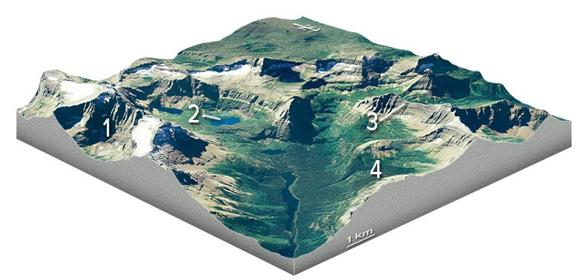What happens along an earthquake fault after rupturing begins? How is the length of time of ground
shaking related to the length of the fault? What will be an ideal response?
Once rupturing begins, it moves along the fault rapidly as long as conditions for failure exist. The
longer the fault along which movement occurs, the more time it takes for the stored energy to be
released, and the longer the ground will shake.
You might also like to view...
Which of the following can we use to recognize prehistoric slope failures?
A) Sedimentary deposits B) Orientation of beds and other geologic structures C) Masses of rock fragments that are unusual for an area D) Hummocky topography E) All of these are correct.
Which feature on this diagram is a cirque?

A) 1, the circular depression at the head of the valley
B) 2, a lake in the upper valley
C) 3, a steep ridge
D) 4, a valley that is above the level of the main valley
________ streams are not connected to groundwater systems and only flow after precipitation events
A) Ephemeral B) Temporary C) Intermittent D) Perennial
Which of the following may affect crustal thickness?
A. erosion B. deposition or burial by volcanic rocks C. type of crust (continental or oceanic) D. deformation (like compression or stretching) E. All of these affect crustal thickness.